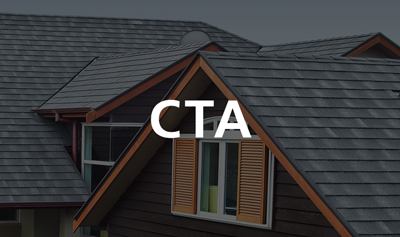
Is your home cold and damp? Has your ceiling sprung a leak or two? Or perhaps mold is starting to build up. Don’t ignore these signs - they're indicators that you may need a new roof.
Read on to learn about five of the most common roofing problems homeowners face, and how to prevent them.
1. Poor installation
Faulty installation increases the chance that you’ll have future issues with your roof, while decreasing the life expectancy of the product.
When your roof isn’t installed properly, moisture from normal weather conditions makes its way into the roof. That can lead to leaks, rot, mold and expensive repair bills.
Additionally, if the flashing (the material sealing open areas inside the roof) is not installed correctly along ventilation pipes, chimneys and heating or cooling systems, other issues can occur. For example, open seams in the flashing can cause tiles to blow off during bad weather. Tilcor’s new, concealed fastening installation method can help here.
Homeowners can enjoy this new innovative system that protects all fastening elements, making roofs more reliable, more watertight and more durable than ever before.
2. Unwanted guests
No, we're not talking about your in-laws coming over for an unexpected visit - rather, it's the local wildlife you have to watch out for.
Small animals, birds and insects can cause a lot of damage and inconvenience in a relatively short time, so it’s best you make sure they know not to get comfortable but to move on instead. If they make a home inside your roof, they can compromise the integrity of its structure, leading to issues down the road.
3. Lack of proper maintenance
Once installed, you have to treat your roof right. Make sure it's properly cleaned and regularly maintained in order to save both money and stress in the long run.
Clear gutters and remove overhanging tree limbs when necessary so that it doesn’t become a bigger job than it needs to be. If left unattended, clogged gutters and tree limbs can cause a lot of expensive damage.
4. Trees
As we said before, overhanging tree branches can cause problems for your roof. When limbs are too close they rub on the surface, damaging tiles and wearing away the outer protective layer. Additionally, falling leaves clog the gutters and branches risk falling onto the roof. Birds and other critters who make homes in trees can also easily find their way to the roof from there.
In summary, trees can cause a lot of unnecessary problems for your roof and house. To avoid tree-related issues, trim back branches or consider removing them entirely if they are too close.
5. Ventilation
When it comes to the life expectancy of your roof, the ventilation of the roof and attic is critical. Good ventilation regulates the moisture and temperature of the air in the attic. If heat and moisture build up due to inadequate or unchecked ventilation, damage can occur to the roofing tiles, insulation, rafters and sheathing. This can also raise energy costs and cause major issues with mold and mildew.
Vents should be installed at the base and top of the roof so the rising warm air and falling cool air can exit naturally without you having to do anything to help the process.
These are five of the most common roof problems that you might encounter, but they’re not the only issues. Remember that regular maintenance is crucial to avoiding expensive repair projects and increasing your roof’s life expectancy.











